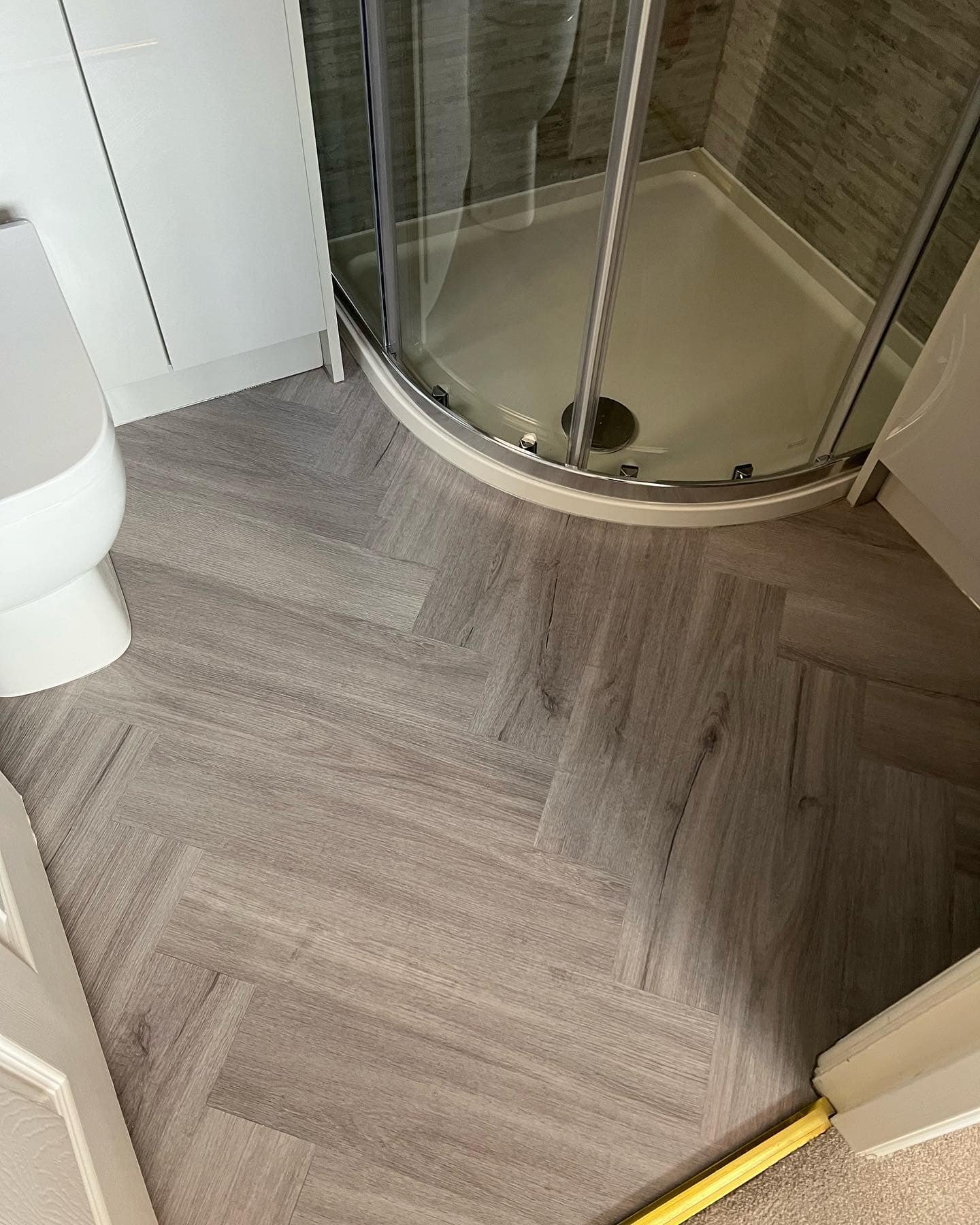Best Flooring for Bathrooms
Bathroom flooring is a critical choice to get right in the home. Not only in terms of interior design, but also with functionality. You don’t want trouble with the floor warping, buckling, or suffering any kind of water damage.
Spillage is inevitable in a bathroom, which is why it’s important to get the correct flooring solution to accommodate these problems.
Hard surface flooring options have become vogue in recent times, and it’s easy to see why. With the natural warmth under foot, the natural wood, stone, or tile effects readily available on the market, any kind of style can be accommodated with hard surface flooring. And bathroom flooring is no exception.
Common hard surface flooring options include:
Wood Flooring
Laminate Flooring
Luxury Vinyl Flooring
Tiles
Real Wood Flooring
We might as well get this one out of the way. Wood flooring is not suitable for bathrooms. It is rare to see one or two brave people trying this out, but it is really not recommended. Wood is too liable to move under various environmental conditions, and as a natural product, wood wants to naturally absorb water. In a bathroom, real wood flooring would eventually warp and buckle, effectively ruining your floor to the point you would have to get it replaced.
Do not put real hardwood flooring in a bathroom.
Laminate Flooring
We generally do not recommend putting laminate flooring in bathrooms. While these floors are very versatile, and there are all sorts of sellers promising water resistant surfaces on some laminate floors, we would still urge on the side of caution to not put laminate in a bathroom. Some people do, and with some of the ‘water resistant surface’ laminates, you might get away with it assuming you clean up any spills immediately, but they are not fully waterproof, and any spillage not cleaned up, or any other major spillage, will ruin the floor.
Again we wouldn’t recommend any laminate flooring in a bathroom.
Luxury Vinyl Flooring
Here we see the first, suitable option for bathroom flooring. LVT flooring is fully waterproof, making it our first recommendation for flooring that can go in a bathroom. This is an incredibly high quality, versatile product that is actually suitable for every room in the house, not just bathrooms.
Using ultra-high quality images, LVT floors can have wood, stone, or tile effects for no extra added cost, and they come with a huge range of colours as well. The make is so good that to an untrained eye many people might at first glance think they are real, natural products.
LVT flooring is versatile because it comes with alternatives such as SPC flooring, also known as rigid core vinyl flooring. These fantastic alternatives to LVT are made from stone, and thus are more rigid and hard wearing than traditional LVT, as they won’t warm under excessive UV exposure. Since they are stone, no environmental condition will move them. No heat, humidity, or water spillage will affect these floors.
Our Next Step Richline 31 and Aquacore ranges both consist of SPC rigid core vinyl floors, with a range of colours in hard wood effect as well as parquet herringbone flooring.
Other Options
Other bathroom flooring solutions range from marble, porcelain, and ceramic flooring, all of which is waterproof and can look great in a bathroom, though will come at a little more cost and complex installation than simple vinyl click. Porcelain and ceramic are good because they can withstand any water spillage, even puddles and lasting spillage. The only con of these is that they can feel cold underfoot, and can be uncomfortable to stand on for long periods of time. They can also be quite slippery in wet environments depending on the finish.


